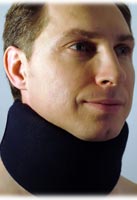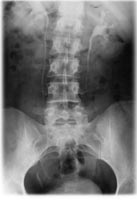Chiropractic aims to aid the human body's own innate intelligence, which seeks balance, or homeostasis, among systems in the body. Chiropractic also emphasizes that proper structure is necessary for proper function and holds that the nervous system is the primary coordinator of function throughout the body.
-
- Innate intelligence refers to an internal guiding force in humans that works to sustain health, attack disease, and restore the body from the effects of trauma.
 As described by chiropractic founder Daniel David Palmer, the human body is a dynamic self-regulator. It seeks to maintain "homeostasis," which is a state of balance among all the systems needed for the body to function correctly. Homeostasis is one of the fundamental characteristics of all living things.
As described by chiropractic founder Daniel David Palmer, the human body is a dynamic self-regulator. It seeks to maintain "homeostasis," which is a state of balance among all the systems needed for the body to function correctly. Homeostasis is one of the fundamental characteristics of all living things.
In homeostatic balance, bodily processes work in concert. When we suffer an injury or become infected, the body automatically repairs itself or attacks the infection. When we're too warm, we perspire; when too cold, we shiver.
Because of the importance of the nervous system in regulating the body, it needs to function at full capacity. It is the role of the chiropractor to identify and remove the barriers to neurophysiological (nerve function) balance. This promotes homeostasis.
- Innate intelligence refers to an internal guiding force in humans that works to sustain health, attack disease, and restore the body from the effects of trauma.
Proper structure is necessary for proper function.

In order for systems to function well, they need to be structurally sound. For example, when our neck muscles tighten, we can't fully turn our head. When our lung tissue is damaged, we can't breathe effectively.
This principle of structure and function applies to all body structures, from its systems to its tissues and even to its individual cells. For this reason, chiropractic uses non-invasive approaches, such as manual care and healing nutrition to minimize potential damage to normal bodily structures.- The nervous system is the primary regulator of bodily functions and key to maintaining homeostasis. Normal nerve function, according to Palmer, results in normal activity and strength of organs. Nerves in and along the spine, however, are subject to a variety of irritations, either through injury, illness or the stresses of daily living. This nerve irritation in turn impacts organ activity and strength.
 Chiropractic theorizes that nerve and organ dysfunction is often the result of misaligned vertebrae of the spine. When the vertebral segments become injured, fixated, or malaligned, soft tissues become irritated, adjacent muscles often tighten, and nerves can be irritated and their function impaired. This is called an "intervertebral subluxation."
Chiropractic theorizes that nerve and organ dysfunction is often the result of misaligned vertebrae of the spine. When the vertebral segments become injured, fixated, or malaligned, soft tissues become irritated, adjacent muscles often tighten, and nerves can be irritated and their function impaired. This is called an "intervertebral subluxation."
This very common condition results from trauma, postural stress, congenital abnormalities, disc degeneration, and the toxic effects of infection. Simple daily living puts everyone at risk for this quite common condition.
Chiropractors use spinal assessment and adjustment to reduce the subluxation, and thus alleviate irritation of the nerves. Because the spine is such a complex structure, adjustments often involve multiple levels of the spine and even the extremities. The goal is balance and normalcy, and the cause of the stress may lie at a distance from any point of discomfort.
Leach, A. (Ed.). (2004). The chiropractic theories: A textbook of scientific research (4th ed.). Philadelphia, PA: Lippincott Williams & Wilkins.
Haldeman, S., Chapman-Smith, D and Peterson, D.M. (Eds.). (1993). Guidelines for chiropractic quality assurance and practice parameters: Proceedings of a consensus conference commissioned by the Congress of Chiropractic State Associations. Gaithersburg, MD: Aspen Publishers.
Haldeman, S., Dagenais, S., and Budgel, B. (Eds.). (2005). Principles and practice of chiropractic. New York, NY: McGraw-Hill, Medical Pub. Division.

